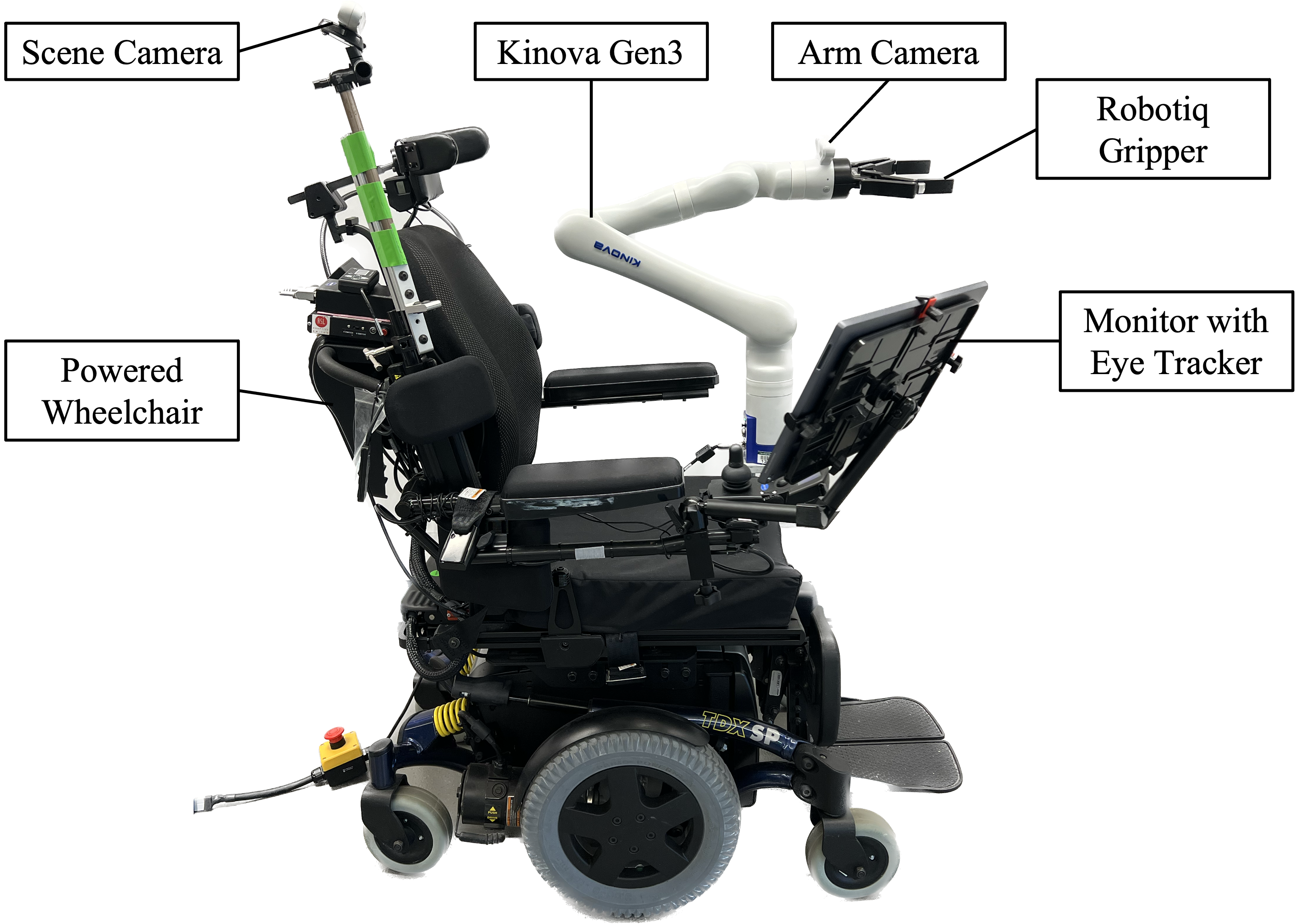Bringing Self-Care Robots into Homes
Faculty Mentors Gina Kubec and Eric Schearer

Summary. Restoration of arm and hand function is a top priority among people with cervical spinal cord injuries who have limited ability to move their arms and hands. One potential solution is to design interfaces that allow people to control a robotic arm to do various daily activities such as eating and grooming. We will investigate the use of one type of interface to learn about it's strengths and weakness. Another potential solution is to use functional electrical stimulation (FES) in wearable devices to promote movement and function for these individuals.
REU Student Involvement. The student(s) will do one of the following projects:
Interface focus: Students will research the use of multiple access methods for user interfaces to control the environment. Students will practice with the interface to learn how to fluidly control a robotic arm for functional activities. The student will gain the ability to teach someone with a spinal cord injury how to independently use this system and document this demonstration.
Functional Electrical Stimulation focus: Students will investigate the use of FES with people who have spinal cord injury. Students will study two different types of FES systems in order to compare the strengths and weaknesses of each design. Students will work with potential users to better understand the desired uses of FES for upper extremity function.
Quantifying Locomotor Deficits in People with Musculoskeletal Conditions
Faculty Mentors Brian Davis and Doug Wajda
Summary. Conditions such as multiple sclerosis, Parkinson’s Disease and diabetes affect gait and posture. These three disorders (and others) are the focus of ongoing research projects with the Center for Human Machine Systems. For instance, in the case of diabetes, our team is interested in identifying risk factors for skin ulceration under the feet of neuropathic patients. For this we have access to state-of-the-art instrumentation for assessing stress patterns at the foot-shoe interface. In the case of other locomotor disorders, we have instrumented gait mats and camera systems for quantifying musculoskeletal impairments.
REU Student Involvement. The student(s) will do one of the following projects:
- Creation of a multibody simulations of gait pathologies. In this project, a student will use ADAMS software replicate the biomechanics of the ankle musculature during walking.
- Collection and analysis of gait data pertaining to patients with musculoskeletal impairments.
- Simulation of closed-loop control systems explain trends seen in biomechanical data previously collected in the lab.
Biomanufacturing Vascularized Tissue Scaffolds for Regenerative Medicine
Faculty Mentors Liqun Ning and Josiah Owusu-Danquah
Summary. One key goal of tissue engineering (TE) is to produce tissue/organ substitutes that can grow with patients, ultimately providing a permanent solution to those damaged. For this, tissue scaffolds made from biomaterials with a porous structure play a crucial role in supporting and/or promoting cell growth and tissue regeneration as well as transport of nutrients and wastes. Design and fabrication of tissue scaffolds has proven to be a challenging task, especially when complex visualization is involved. Vascularization plays an important role in supplying oxygen and nutrients to cells and removing metabolites. Therefore, the creation of vascular networks is crucial for the fabrication of scaffolds, particularly thick and large scaffolds designed for the repair/replacement of. However, successfully orchestrating the formation of scaffolds with biomimetic architectures (e.g., vascularization) and functions is challenging, requiring optimization of numerous bioprinting/culturing conditions, including cell types, biomaterial properties, bioprinting processes, and culture environment. The objective of this project is to develop methods to create vascularized tissue scaffolds based on the integration of 3D bioprinting and biomaterials/cells, and characterize their mechanical and biological properties for applications in regenerative medicine.
REU Student Involvement. The student(s) will do one of the following projects:
- Bioprint acellular scaffolds following the CAD model and generate insights into the roles ofbioprinting process parameters on final structural properties of the scaffold.
- Bioprint vascularized scaffolds and characterize their mechanical behavior computationally and experimentally.
- Bioprint cell-laden tissue scaffolds and validate the performance of cells encapsulated and, on this basis, optimize the scaffold fabrication through bioprinting process control, material synthesis, and culture conditions.
Kinematic Based Indicators of Balance Exercise Intensity.
Faculty Mentors Debbie Epsy and Anne Su
Summary. Impaired balance limits people’s ability to move around, to walk, to work, andto care for themselves; and it puts them at high risk of falling. Therapeutic exercise, specifically balance training exercises, are one of the most effective interventions for improving balance and for reducing falls andfall risk. To eb effective, the exercise has to be of high enough intensity, i.e., of great enough challenge to the person doing the exercises. This is not objectively measurable at this point. The long-term goal of this project is to advance clinically feasible andeffective therapeutic balance training exercise, especially the intensity or challenge-posed component.
REU Student Involvement. The summer project will collect and analyze motion data of various groups of people performing various balance activities in order to identify the movement aspects that can be used to demark intensity level. The analysis will also focus on the question of what wearable sensors might reasonably substitute for full body motion capture for clinical balance training. One aspect of this may also include specific analysis of motion and gait mat data collected from dancers (classical ballet) to analyze interrelationships of strength, power, joint mobility, and balance in standard dance activities. This project might reasonably fit for students in Mechanical or Biomedical Engineering, Computer Engineering or Comp Sci, Math, or Physics.

